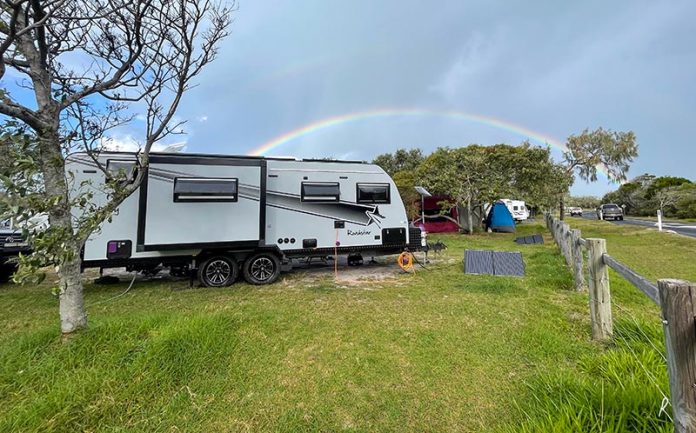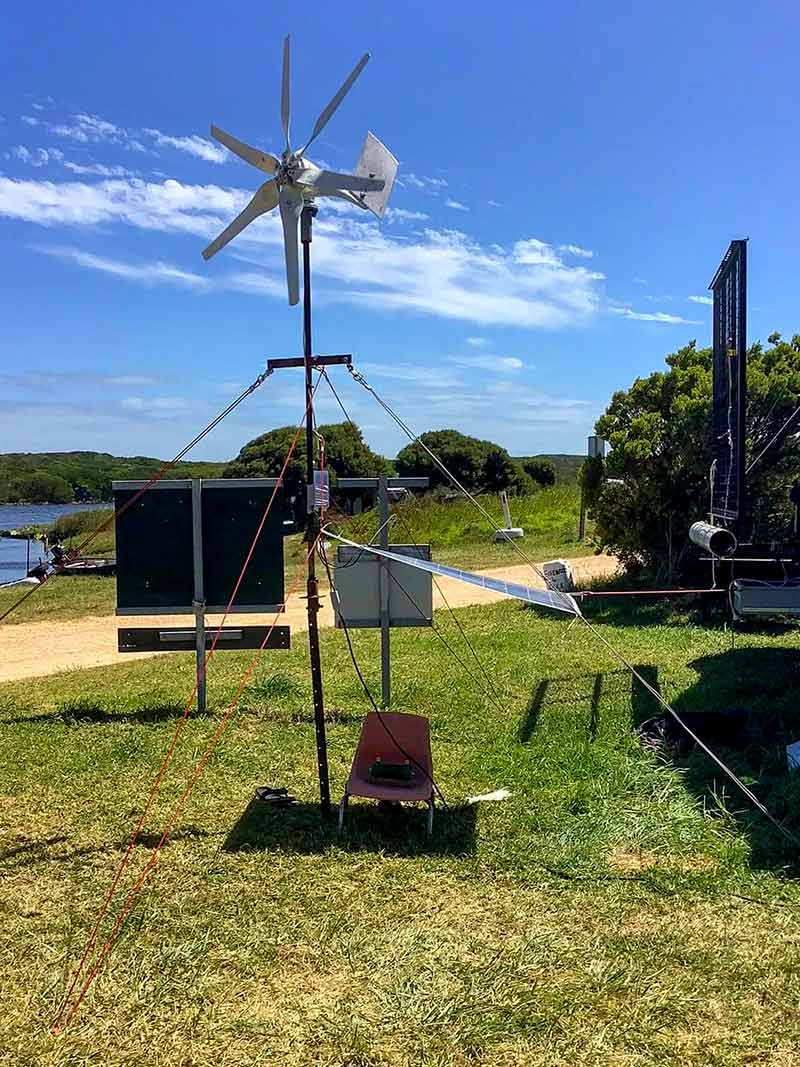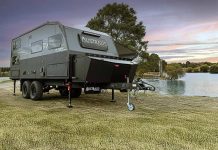Back in April 2023, we looked at how you should size up your caravan’s battery requirements based on the power consumption of the appliances you want to run. This month, we look at the various ways you can recharge those batteries, particularly when you’re free-camping and 240V mains power is not available. We will also look at the advantages and disadvantages of each method so you can make an informed decision about which methods suit you the best.
PORTABLE PETROL GENERATORS
The good old ‘genny’ has been a method for recharging batteries and supplying off-grid power for years. While the small single-piston petrol motor at the heart of a generator hasn’t changed much over the years, the other components definitely have. It is rare to find a generator that doesn’t have a pure sine wave inverter and some larger generators even come with a remote key start. All cool innovations.
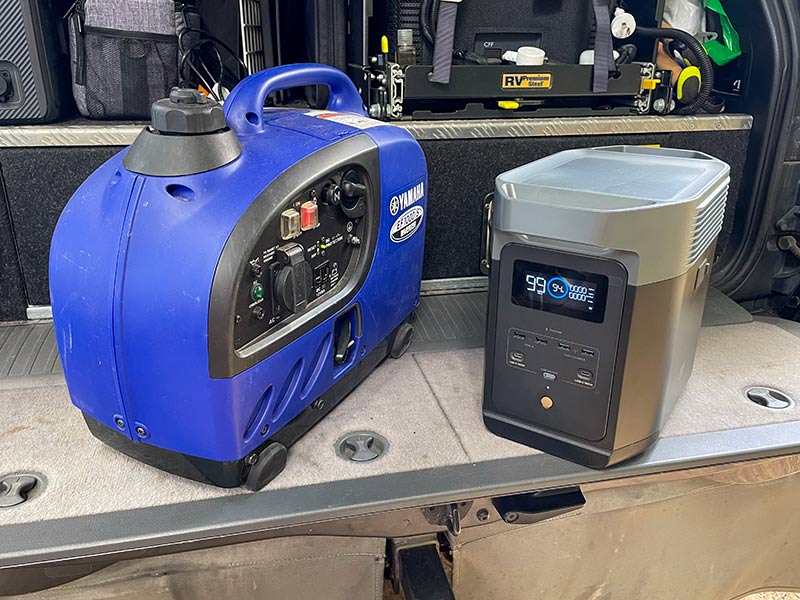
Generators are available in varying capacities, sizes and, dare I say it, levels of quality. You certainly do get what you pay for. When it comes to just recharging your caravan’s batteries, the capacity will depend on the watt rating of the AC charger in your caravan.
For example, Enerdrive rates its chargers as follows:
- 20A: 350W at full load;
- 40A: 700W at full load; and
- 60A: 1050W at full load.
So for any battery charger up to 40A, a 1000W generator will serve you well. Once you start talking about higher-capacity chargers over 40A, you’re going to be looking at a generator rated to about 2000W.
Advantages: Petrol generators will run for as long as you have fuel on hand. The smaller-capacity generators are relatively lightweight. My 1000W Yamaha weighs around 13kg. I have found a 5L jerry can sufficient for my needs, with the combined coming to about 20kg. Generators can be used to power a variety of other appliances up to their rated capacity.
Disadvantages: Generators are noisy. Even the brand name ones can make their presence felt and this can make you unpopular with your neighbours in the campground. Also, you have to contend with the smell of petrol, which may limit your storage options. Generators can also be subject to reliability issues, especially if you haven’t used them for a while or you haven’t kept up with regular maintenance.
Important note: Many generators have a 12V output that may be marked as a battery charger outlet. I would strongly recommend you do not use this as a means to charge your van batteries as you can do serious damage to them while doing so. I would only use this feature as an absolute last resort.
PORTABLE SOLAR PANELS
Portable solar panels come in a wide variety of capacities, with 150-300W panels being the most popular among caravanners. You can get either solid folding panels or solar blankets. Today you can even get panels that are a combination of both, being semi-rigid with stands, making them lightweight and easy to store.
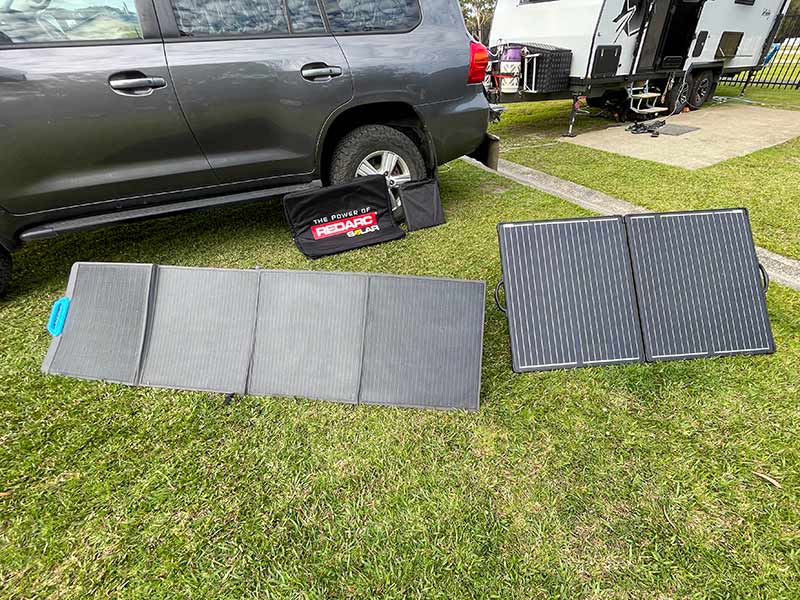
With so many brands on the market, prices can vary greatly. There is usually a panel to suit any budget. But be careful. Many of the cheaper brands may not meet your expectations. I had a 300W solar blanket that would be lucky to produce 150W in seemingly perfect conditions. In truth, the vast majority of solar panels would struggle to meet their rated output.
As annoying as this is, you can expect a 200W panel to produce between 150-180W. There are rare exceptions and they generally will be one of the more expensive brand names. I have a Redarc 200W solid folding panel and it has exceeded its rated output several times.
Connecting an external solar panel to your van can be achieved in a number of ways. If you have an Anderson plug that is directly connected to your van’s battery, you can plug a panel into it via a solar controller. If that Anderson plug is wired to a DC-DC converter, then you can’t plug a panel into it.
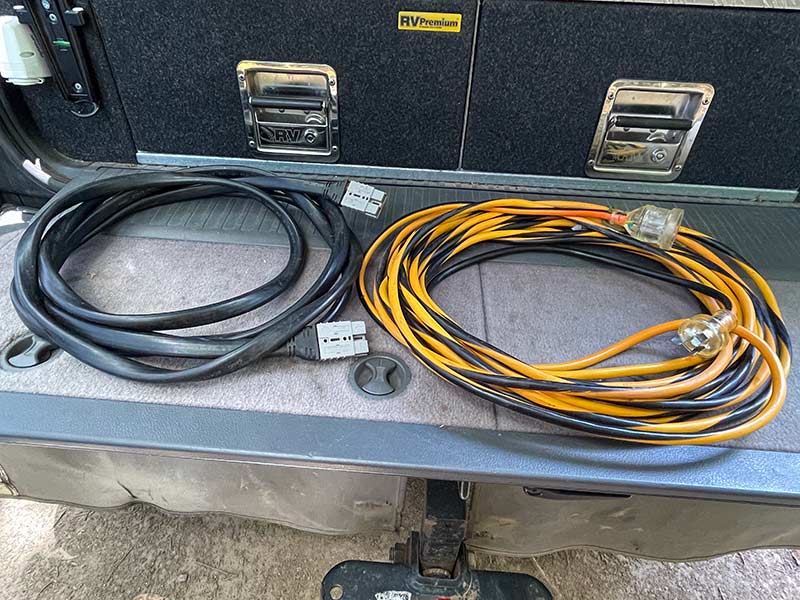
Some caravan manufacturers install a separate Anderson plug on the side of the van that is wired in parallel with the rooftop panels. Here, you can plug in an external solar panel without needing a solar controller. In this case, the external panel should have an open circuit voltage (OCV) rating that is the same or very close to the rooftop panels. It’s not critical but if the difference is more than 2-3V, it can have a negative effect on overall performance.
The best solution is to install a separate solar controller in your caravan purely for external solar panel connection. This will give you the flexibility to use any external panel while maintaining maximum performance from your rooftop panels.
Advantages: Wide variety of options and configurations available to suit any budget. Silent operation. Great if you’re camped under trees or if you need to maximise solar charging on cloudy days.
Disadvantages: Solar panels rarely produce their maximum rated output. Solid folding panels often perform better than the equivalent blanket but they can be bulky to store. If the sun isn’t shining, and you have no alternative means to recharge your batteries, you could be packing up early and heading for a caravan park.
PORTABLE LITHIUM BATTERIES
These devices are the latest thing in camping and caravanning. They consist of a large capacity lithium battery, a 240A AC charger, a 12V DC charger and an MPPT solar charger all in one portable unit. They also feature a pure sine wave inverter for powering a range of appliances when you’re camping off the grid. You can plug your caravan into one of these as you would a petrol generator and, depending on the capacity of the unit, it will recharge or, at least, supplement your van’s batteries.
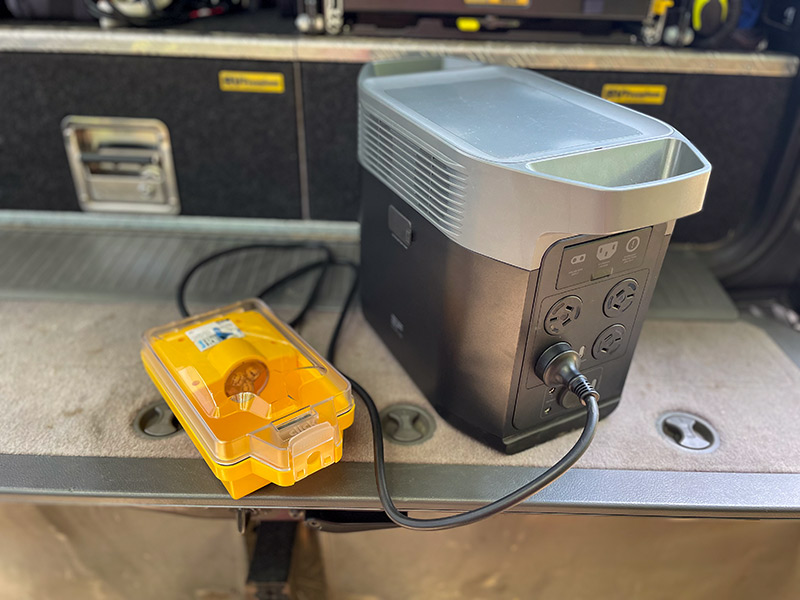
In the past, portable power stations with a decent battery capacity were quite expensive and too large to be suitable for caravanning, but the last few years have seen incredible development in the technology. Today, you can get a portable power station with a decent battery capacity, very fast recharging options, high-wattage inverters all within a portable, lightweight system.
As an example, we have been testing out an EchoFlow Delta 2 power station as an alternative recharging solution. It has a 1000Wh LiFePO battery and an 1800W inverter. That easily handles our van’s 40A battery charger and has enough capacity to power the appliances in our van for between four and six hours, depending on how economical we are with power usage. If we have good sun the next day, it can be recharged with up to 400W of solar using its internal MPPT controller, or we can recharge it from the van’s inverter using excess solar.
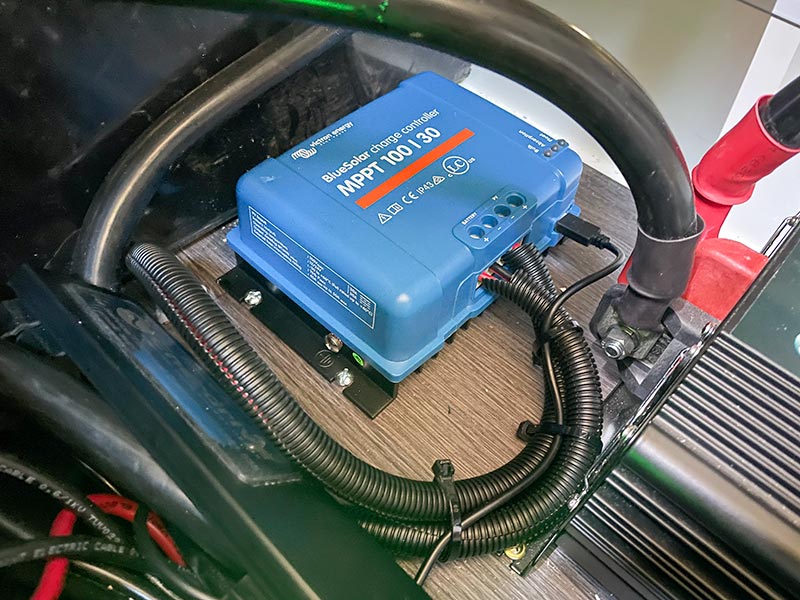
If the weather is still ordinary the next day, it can be plugged into a direct 12V feed from the alternator of our Land Cruiser and recharged at around 190W while we go for a day’s drive.
The most amazing feature is the size of the Delta 2. It’s smaller than my Yamaha 1000W petrol generator, and at just 9.5kg, it’s lighter.
There are other models in the EchoFlow range and, if none of these suit your needs, there are many other brands of portable power stations, so it pays to shop around.
Advantages: Fully self-contained systems. No smelly petrol to carry around and no maintenance required. Multiple recharge options, many very fast and efficient and you can use your existing portable solar panels. Use it at home in the event of a power outage. Virtually silent operation.
Disadvantages: High-capacity models can be expensive and you do need at least a 1000Wh unit to be useful for modern caravans. Even with the fastest charging options, you still have to wait for the unit to recharge once its battery is depleted.
WIND TURBINE GENERATORS
In the world of long-distance yachting, wind turbines are a regular thing. But in the world of caravans and RVs, they are virtually unseen. In all my years of travelling across the country, I’ve only ever seen three caravans utilising a wind turbine to recharge their batteries. The reasons for this vary but a lot of it boils down to perceptions of poor performance. That is true to a certain extent, especially with cheap eBay turbines that have little to no chance of matching their output specifications. So like anything, you get what you pay for.
Wind generators come in a huge range of power outputs, starting at about 200W and all the way up to 3000W! You have to ask why are we not using them.
The reality is that for a wind turbine to generate anything over 400W, the wind has to be blowing at a very high speed. Further, it needs to be a consistent wind and, unless you’re camped on the coastal fringes, you just cannot rely on that to happen.
Wind generators are quite large and require a degree of assembly to erect. They also need to be placed as high as possible off the ground in order to take advantage of whatever wind is available. This makes them impractical for short-term use but if you spend your holidays on the coast for weeks or even months at a time, a wind turbine may actually be useful, especially for those times when the sun isn’t shining.
Advantages: They will work when solar isn’t available and you’ve run out of petrol for your generator. In ideal conditions, they can produce some very useful power levels.
Disadvantages: The market is flooded with cheap units that deliver less than satisfactory performance. They can be noisy. Require some assembly every time you use them.
DC-DC CHARGERS
Most caravans utilise an Anderson connection between the tow vehicle and van in order to provide some charge to the van’s batteries while you travel between stops. The problem is these connections are prone to severe voltage drop due to inadequate wiring to support the distances between the car’s alternator and the van’s batteries. Most would be lucky to see 5A of charging and that simply isn’t enough to meet the modern traveller’s requirements.
Enter the DC-DC charger. These clever devices work in much the same way as a solar controller, except they take whatever power reaches the caravan from the car’s Anderson plug and ‘boosts’ it to the voltage and amps required to effectively recharge the batteries. They are so effective that many caravan manufacturers fit them as standard equipment.

There are many brands and models to choose from, with charge rates varying between 10 and 40A. Enerdrive DC-DC converters also function as solar controllers but they won’t do both at the same time.
As good as they are, they can’t perform miracles. If your Anderson connection has inadequate wiring, you may not get the best out of your DC-DC converter.
Advantages: Maximise charging from your tow vehicle while you travel. Most have specific charging profiles for a variety of battery chemistries.
Disadvantages: They need high-quality wiring in order to achieve their maximum charge rates. If you leave the Anderson connection plugged in while the engine is off, it can deplete your car’s batteries very quickly.
TOW VEHICLE-MOUNTED INVERTER
For many travellers, the option of carrying any additional charging equipment is just not feasible. They may not have the space available or they might be teetering on their weight limits. Fortunately, there is a solution.
You can mount a pure sine wave inverter in your tow vehicle for minimal cost and without adding a lot of weight to your rig. Inverters come in many output levels, from as low as 150W to as high as 3000W.
Now, before you rush out and buy the biggest inverter you can afford, there are a lot of things to consider before deciding if this is a solution for you. If I want to power my van’s 40A charger, which is rated at 700W, from an inverter, it will draw around 70A from the car’s battery system. That’s a lot of amps. If the engine is not running, you will flatten a 100Ah battery in less than two hours! You will also need to have adequate cabling to support those sorts of loads.
We strongly recommend talking to an auto electrician about this to see if your vehicle can support it and to get the installation right.
Advantages: Inexpensive and lightweight. A wide range of power outputs available to suit any application.
Disadvantages: Very high power draw on the car’s battery system. Unless you know exactly what you’re doing, the installation is best left to a professional.
SUMMING UP
You can see from this list there are a lot of options available. Deciding on which one suits your needs will depend on how often you go free-camping, how long you expect your van’s batteries to last and how long you intend to stay away from mains power.
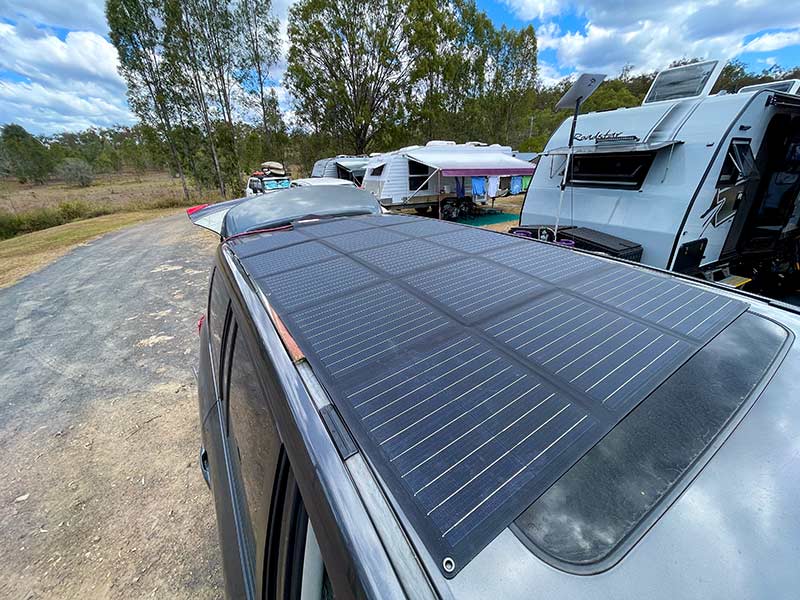
What I can say with some certainty is that you will want to have at least two of the systems detailed here so that you have a level of redundancy. I encourage you to talk to other caravanners and to see what systems they use to keep their batteries charged up off the grid.
One thing is for sure: petrol-powered generators are not the only option. There are many more environmentally-friendly solutions available that won’t make you unpopular at the campground.


